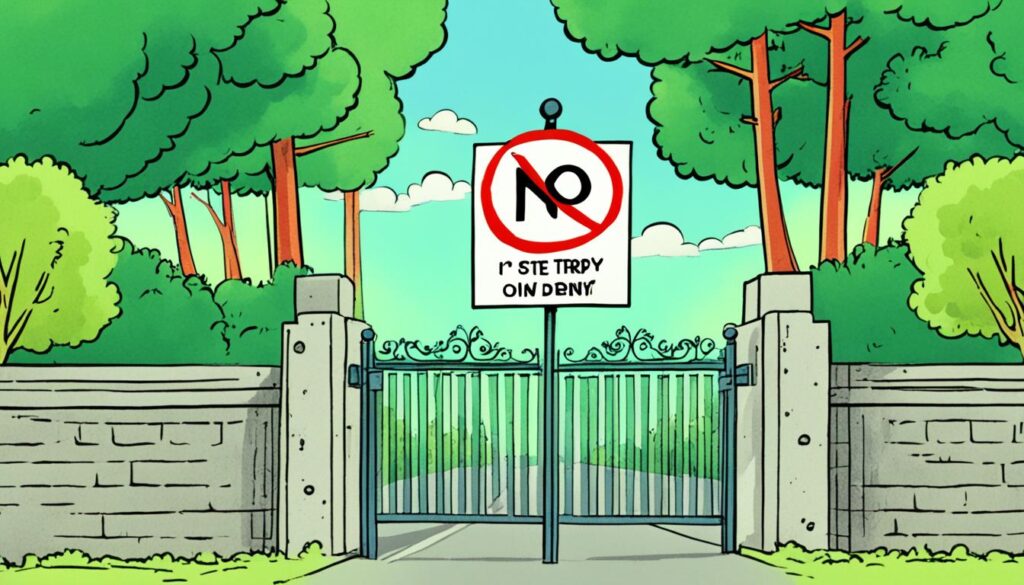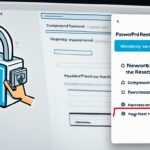Table of Contents
Learn how to unpublish a WordPress site with ease and speed. Our step-by-step guide will take you through the process of removing your WordPress site quickly, whether it’s for privacy reasons or updates.
Key Takeaways
- Unpublishing a WordPress site doesn’t have to be complicated. Follow our guide for an easy unpublishing process.
- Removing your WordPress site quickly is essential for privacy concerns or when you need to make updates.
- Back up your WordPress site before you unpublish it to preserve your valuable data.
- Disable search engine visibility to keep your unpublished site private and prevent indexing.
- Password protect your WordPress site to restrict access and maintain limited visibility while unpublished.
Reasons for Unpublishing a WordPress Site
There are various reasons why you might want to unpublish your WordPress site. Privacy concerns, the need for maintenance and updates, or perhaps you are revamping your website are just a few common scenarios.
“Privacy concerns can arise from various sources, such as the need to protect sensitive information or restrict access to specific individuals or groups.”
Privacy Concerns
Privacy is a vital consideration when managing a website. Whether you are discussing confidential information or want to ensure that only authorized individuals have access to your content, unpublishing your WordPress site can help address these concerns. By making your site temporarily inaccessible, you can safeguard sensitive data and maintain control over its dissemination.
Maintenance and Updates
Ongoing maintenance is crucial for the optimal performance of any website. Unpublishing your WordPress site allows you to carry out necessary updates without interrupting the user experience. Whether you are fixing bugs, upgrading plugins, or enhancing security measures, taking your site offline ensures a smooth and uninterrupted maintenance process.
Revamping Your Website
Rebranding or giving your website a fresh look often requires major changes, which can be challenging to implement while the site is live. Unpublishing your WordPress site gives you the freedom to revamp its design, layout, and content without presenting unfinished or inconsistent pages to your audience. Take the time to create a visually appealing and engaging website that aligns with your brand and resonates with your target audience.
Unpublishing your WordPress site not only allows you to address privacy concerns and perform essential maintenance and updates but also provides an opportunity to revamp your website to better meet your goals and objectives. Take advantage of these reasons to temporarily remove your site from public view and create a more secure, functional, and visually captivating online presence.
Backing Up Your WordPress Site
Before you unpublish your WordPress site, it is crucial to back up your data to ensure that no information is lost during the process. Making a WordPress backup is a simple and effective way to preserve your valuable data and provide peace of mind.
Create a Full Site Backup
Creating a complete backup of your WordPress site involves saving all its files and its database. Follow these steps to generate a comprehensive backup:
- Access your WordPress dashboard and install a reliable backup plugin such as UpdraftPlus or BackupBuddy.
- Activate the installed plugin and navigate to its settings page.
- Configure the backup settings according to your preferences, including the backup schedule and storage destination.
- Initiate the backup process by clicking the “Backup Now” or similar button.
- Wait for the backup to complete. The duration will depend on the size of your site.
- Download the backup files to your local computer or store them securely in a cloud service.
Remember to perform regular backups to ensure your WordPress site’s data is always up to date.
Additional Backup Options
In addition to full site backups, you can also consider other backup options to further protect your WordPress site:
- Manual Backup: Download the wp-content folder using an FTP client to save essential files such as themes, plugins, and media.
- Database Backup: Export your WordPress database using phpMyAdmin or the built-in WordPress export feature.
Combining multiple backup methods provides an extra layer of security for preserving your data.
“Backing up your WordPress site is like having an insurance policy. It ensures that your valuable data is protected and can be easily restored if something goes wrong.” – Jane Hunter, Web Developer
By following these backup procedures, you can safeguard your WordPress site’s content, settings, and media files, minimizing the risk of data loss during the unpublishing process. Now that you have a reliable backup, it’s time to proceed to the next steps in securely removing your WordPress site.
Disabling Search Engine Visibility
When it comes to preserving your privacy during the unpublishing process of your WordPress site, one important step is to disable search engine visibility. By preventing indexing by search engines, you can ensure that your unpublished site remains private and out of public view. In this section, we will guide you through the process of disabling search engine visibility, allowing you to have control over the accessibility of your site.
Prevent Indexing:
Search engine visibility plays a significant role in determining the visibility of your website in search engine results. By default, WordPress allows search engines to index your site and display it in relevant search results. However, when you want to keep your site unpublished and maintain your privacy, disabling search engine visibility becomes crucial.
Disabling search engine visibility prevents search engines from indexing your site and displaying it in search results. This ensures that your site remains hidden from public view, preserving your privacy during the unpublishing process.
How to Disable Search Engine Visibility:
- Login to your WordPress admin dashboard.
- Navigate to the “Settings” menu and click on “Reading”.
- Scroll down to the “Search Engine Visibility” section.
- Tick the checkbox that says “Discourage search engines from indexing this site”.
- Click on the “Save Changes” button to update your settings.
By following these simple steps, you can effectively prevent search engine indexing of your WordPress site and protect your privacy. Remember to save the changes to ensure that the new settings take effect immediately.
Disabling search engine visibility is an essential step in preserving your privacy while your WordPress site remains unpublished. By preventing indexing by search engines, you ensure that your site remains hidden from public view, giving you full control over its accessibility.

Password Protecting Your WordPress Site
When it comes to protecting your WordPress site, password protection is a key security measure. By setting up password protection, you can restrict access to your site and ensure that only authorized users can view its content. This not only enhances the security of your site but also adds an extra layer of privacy, limiting its visibility to a select few.
Enabling password protection is particularly important when your site is unpublished or under development. It allows you to have limited access to your site while keeping it hidden from the public eye.
The Benefits of Password Protection
Implementing password protection for your WordPress site offers several advantages:
- Enhanced Security: By requiring a password to access your site, you can prevent unauthorized users from viewing sensitive information or making changes.
- Restricted Access: With password protection, only those individuals with the correct credentials can view the site, ensuring that it remains private and secure.
- Controlled Visibility: Password protection allows you to manage who can see your site, providing a level of exclusivity and limited visibility.
Now, let’s walk through the steps to enable password protection for your WordPress site:
Step 1: Access the WordPress Dashboard
To get started, log in to your WordPress dashboard using your admin credentials.
In the WordPress dashboard, locate the “Settings” menu on the left-hand side and click on it to expand the options.
Step 3: Click on “Reading”
Within the “Settings” menu, click on the “Reading” option to access the reading settings for your site.
Step 4: Enable Password Protection
Scroll down the “Reading” settings page until you find the section labeled “Site Visibility.” Here, click on the checkbox next to “Password Protected” and enter a password of your choice in the designated field.
Step 5: Save Changes
Ensure that you click on the “Save Changes” button at the bottom of the page to save your password protection settings.
That’s it! Your WordPress site is now password protected, providing limited visibility and access to authorized users. Remember to share the password with those who should have access to your site.
Implementing password protection is a crucial step in securing and controlling the visibility of your WordPress site. By following these simple steps, you can ensure that only authorized individuals can view your site, even when it’s unpublished or undergoing updates.
Unpublishing Your WordPress Site
When the time comes to unpublish your WordPress site, it’s essential to follow a proper procedure to ensure it is removed and inaccessible to visitors. In this section, we will walk you through the step-by-step process of unpublishing your WordPress site, keeping it hidden until you’re ready to publish it again.
To initiate the unpublishing process, you’ll need to access the backend of your WordPress site. Once logged in, navigate to the administration dashboard to begin.
- Go to the “Settings” menu and select the “Reading” option.
- Under the “Reading Settings,” you’ll find the “Search Engine Visibility” option.
- Tick the box next to “Discourage search engines from indexing this site.”
By disabling search engine visibility, you prevent search engines from indexing your site, making it less likely to appear in search engine results. This step plays a crucial role in keeping your site hidden and inaccessible.
If you want to take an additional precautionary step to restrict access, you can password-protect your WordPress site. This way, only authorized users with the password will be able to view it.
Follow these steps to password protect your WordPress site:
- Install and activate a security plugin such as “Password Protected.”
- Access the plugin’s settings and define a password for your site.
- Customize the message that visitors will see when prompted for the password.
With password protection in place, your site becomes even more secure and inaccessible to unauthorized individuals.
After implementing these measures, your WordPress site is effectively unpublished and hidden from both search engines and visitors. It will remain inaccessible until you choose to publish it again.
Remember to document any changes you make during the unpublishing process so that you can easily reverse them when you’re ready to publish the site once more.
Now that you know how to unpublish your WordPress site and make it inaccessible, you have the necessary tools to control the visibility and availability of your website.
Conclusion
In conclusion, unpublishing a WordPress site can be a necessary and beneficial step for various reasons. Our easy-to-follow guide has equipped you with the knowledge and tools to swiftly and effectively remove your site, whether it is for privacy protection or to facilitate updates and changes.
By taking control of your WordPress site’s visibility, you can safeguard your personal information and ensure that unauthorized individuals cannot access your site while it is unpublished. Additionally, password protection allows you to restrict access and limit the visibility of your site to authorized users only.
Remember, backing up your WordPress site is crucial before initiating the unpublishing process. This ensures that none of your valuable data is lost during the transition. Disabling search engine visibility further preserves your privacy, preventing search engines from indexing your site and making it publicly accessible.
With our comprehensive guide, you now have the necessary knowledge to confidently unpublish your WordPress site when needed. Take charge of your online presence today and enjoy the peace of mind that comes with knowing your site is secure and your privacy is protected.
FAQ
How do I unpublish my WordPress site?
To unpublish your WordPress site, follow these steps:
1. Log in to your WordPress dashboard.
2. Go to the “Settings” menu and click on “Reading”.
3. In the “Search Engine Visibility” section, check the box that says “Discourage search engines from indexing this site”.
4. Save the changes.
Your WordPress site will now be unpublished and will not appear in search engine results.
Why would I want to unpublish my WordPress site?
There are various reasons why you might want to unpublish your WordPress site. Some common scenarios include:
– Privacy concerns: You may want to keep your site private and prevent it from being accessed by unauthorized users.
– Maintenance and updates: If you need to make significant changes to your site or perform maintenance tasks, unpublishing it can prevent disruptions for your visitors.
– Revamping your website: If you are planning to redesign or rebrand your site, unpublishing it allows you to create a new version offline before making it live.
Should I back up my WordPress site before unpublishing it?
Yes, it is highly recommended to back up your WordPress site before unpublishing it. By creating a backup, you ensure that all your data, including posts, plugins, and settings, is preserved. This backup can be used to restore your site if needed, or when you are ready to publish it again.
How can I disable search engine visibility for my unpublished WordPress site?
To disable search engine visibility for your unpublished WordPress site, follow these steps:
1. Log in to your WordPress dashboard.
2. Go to the “Settings” menu and click on “Reading”.
3. In the “Search Engine Visibility” section, check the box that says “Discourage search engines from indexing this site”.
4. Save the changes.
By doing this, search engines will be prevented from indexing your site, ensuring that it remains private and not visible in search results.
Can I password protect my unpublished WordPress site?
Yes, you can password protect your unpublished WordPress site to restrict access and limit its visibility. Here’s how you can do it:
1. Log in to your WordPress dashboard.
2. Go to the “Settings” menu and click on “Reading”.
3. Scroll down to the “Site Visibility” section.
4. Check the box that says “Password Protected”.
5. Enter a password of your choice.
6. Save the changes.
Now, when someone tries to access your site, they will be prompted to enter the password you set. Only authorized users with the password will be able to view the site.
Can you guide me through the process of unpublishing my WordPress site?
Absolutely! Here is a step-by-step guide on how to unpublish your WordPress site:
1. Log in to your WordPress dashboard.
2. Go to the “Settings” menu and click on “Reading”.
3. In the “Search Engine Visibility” section, check the box that says “Discourage search engines from indexing this site”.
4. Save the changes.
5. To make your site inaccessible to visitors, you can also consider password protecting it. Follow the steps mentioned in the previous FAQ to password protect your site.
By following these steps, your WordPress site will be unpublished and inaccessible to the public.







